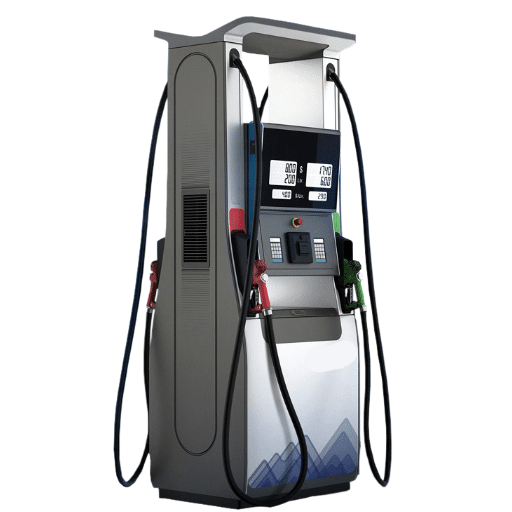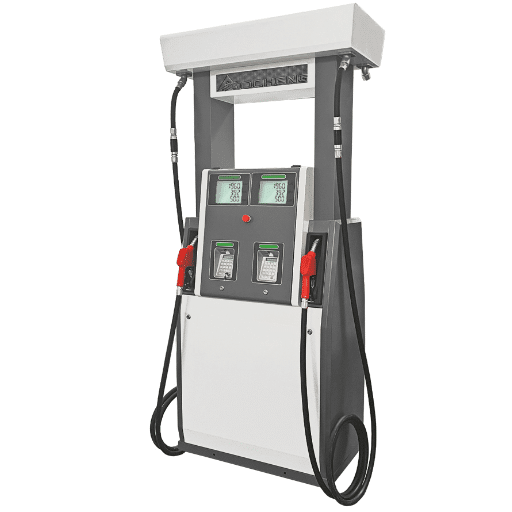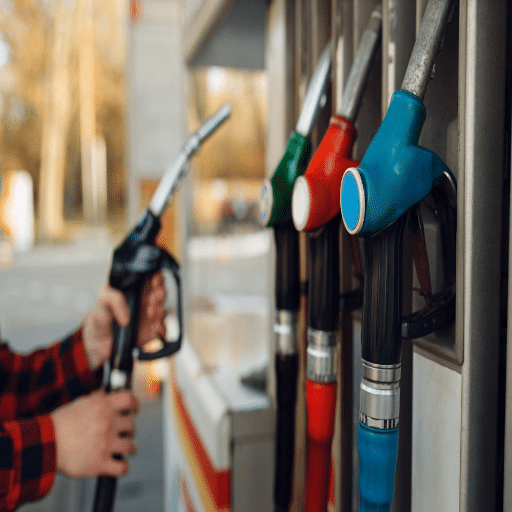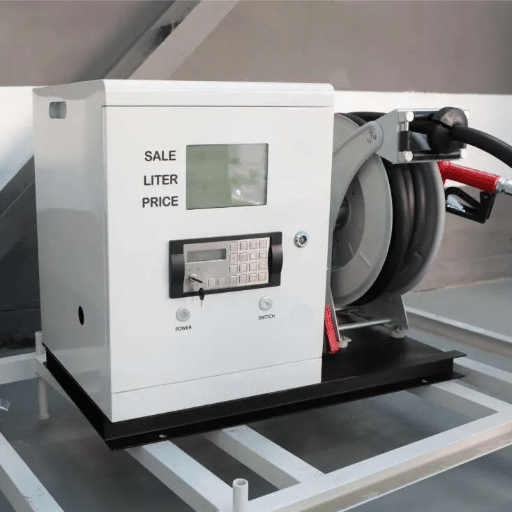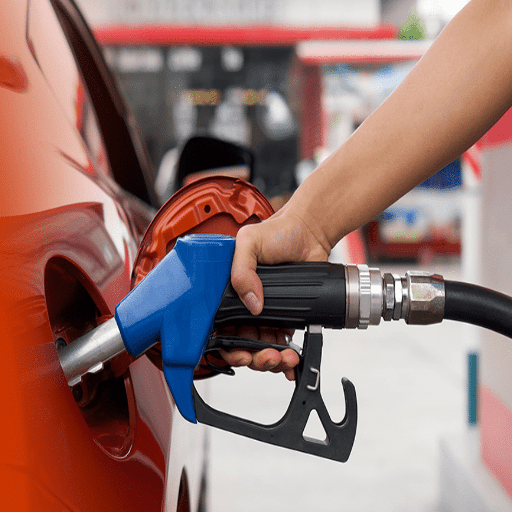Explosion-proof lights are essential for hazardous environments where conventional lighting methods could pose hazards. Engineered to endure extreme conditions and prevent the ignition of flammable things, these lights are thus chosen for the oil and gas industries, in chemical processing, mining, and manufacturing. Too many choices can be highly confusing with different kinds of explosion-proof lights. This article will lead you through the various types, distinguishing features, and applications, thus enabling your educated choice for industrial or commercial needs. Kindly hold on as we bring you up to date on the innovations that keep a workplace safe and efficient.
What is Explosion Proof Lighting?
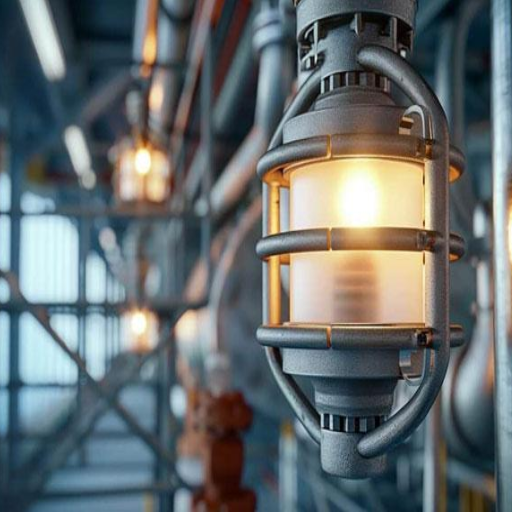
Explosion-proof lighting is denoted as lighting fixtures intended to operate safely in a hazardous environment containing flammable gases, vapors, or dust particles. Any sparks or heat emitted by these fixtures are included within the fixture, so they may not ignite the exterior atmosphere and generate an explosion. This lighting system is of utmost importance for industries like petroleum and gas, chemical processing, and mining, where safety is paramount. Explosion-proof lighting has operating standards and certifications that allow it to illuminate with utmost reliability while keeping risk factors to a minimum in an already risky environment.
How does explosion-proof light work?
Explosion-proof lights are special equipment designed with extreme precision to be safe in a volatile environment. To prevent dangerous gases or vapors from igniting, explosion-proof lights are kept behind rigid walls that prevent an explosion from happening inside the fixture and transmitting into the external atmosphere.
Inherently, the lights must be housed in a rugged enclosure, usually constructed of an aluminum alloy or stainless steel, to withstand internal explosions at very high pressures, contain any sparks or heat being created inside, or from the exterior atmosphere itself.
Requiring tightly sealed joints through the enclosure so that any sparks generated inside are isolated from the outside hazardous environment, explosion-proof lights are designed in such a manner. These lights are usually equipped with heat dissipation systems so that the lights themselves will not become a source of ignition. For example, modern LED explosion-proof lighting emits far less heat than the incandescent or gas-discharge lamps that present greater ignition risks.
Explosion-proof lights are then tested to the extreme and certified to various standards of explosion safety, such as ATEX (Appareil destiné à être utilisé en aTmosphères Explosives) or IECEx (International Electrotechnical Commission Explosive), to name just a few. The certification ensures that the light fixture passed stringent requirements, including pressure tests that simulate an internal explosion, ensuring that no combustion gases from the inside of the fixture could escape through the sealing interface into an explosive atmosphere during its operation.
These lights are ideally suited to refineries in the oil and gas sector. LED explosion-proof light offers energy-efficient illumination with an extended lifespan, minimizing maintenance downtime in hazardous areas where frequent intervention is difficult. Studies show that these lights can last for 50,000 hours while consuming 50 to 80 percent less energy than conventional solutions.
These technological enhancements ensure that explosion-proof lighting offers dependable and safe lighting solutions to hazardous industrial environments, thus improving operational efficiency and safety.
What makes a light explosion-proof?
The basic functioning of explosion-proof light is to prevent the ignition of flammable gases, vapors, or combustible dusts in a hazardous atmosphere. The lights are engineered to withstand any sparks, heat, or flames that could ignite an explosive atmosphere. The enclosure is probably the most critical safety feature of an explosion-proof light, with the average one being made of hefty metals such as cast aluminum or stainless steel, along with tempered glass designed to withstand harsh conditions.
Explosion-proof lights also reach different safety standards, such as those provided in the NEC or under international certifications such as ATEX or IECEx. For instance, a Class I, Division 1 rated fixture must be installed where ignitable substances are present under normal operating conditions. On the other hand, Class I, Division 2 lighting would be suitable for environments where flammable substances are present only during abnormal conditions. Such classifications ensure that each fixture is assigned for unforeseen hazardous conditions. Besides, they tend to be more modern by integrating LED technology for better thermal management. LEDs emit much less heat than other lamps, ultimately reducing the chances of ignition.
These lights are also intensively tested to ensure lasting performance under extremely high-pressure and high-temperature conditions. For example, many explosion-proof lights are rated to operate anywhere from -40°F to 140°F, making them equally apt for varying industrial zones. In essence, by imparting an amalgamation of innovative design and uncompromising compliance standards, explosion-proof lights thus form an obvious layer of defense for workplace safety in industries like oil and gas, mining, and chemical manufacturing.
Why is it essential for hazardous locations?
Explosion-proof lights are nigh indispensable in hazardous places because they minimize any chances of ignition via flammable gases, vapors, or dust. These lights are manufactured according to industrial standards such as UL844 and ATEX, to contain any sparks or explosions inside, thus not igniting materials external to the light. In the oil and gas sector, for example, where methane and other volatile compounds are commonly present, explosion-proof lighting significantly reduces the chances of an industrial accident.
Statistics reveal that between 2020 and 2021, over 1,100 incidents related to flammable atmospheres were reported across manufacturing and industrial sectors worldwide. Many of these incidents would have simply been prevented by the proper utilization of explosion-proof technologies, including lighting systems. More importantly, explosion-proof lights are built to last longer and withstand harsh conditions, thus lowering costs since replacement and maintenance are less frequent. The necessity for explosion-proof lighting considers compliance with safety regulations, operational reliability, and saving lives in hazardous working environments.
Understanding the Classification of Hazardous Locations
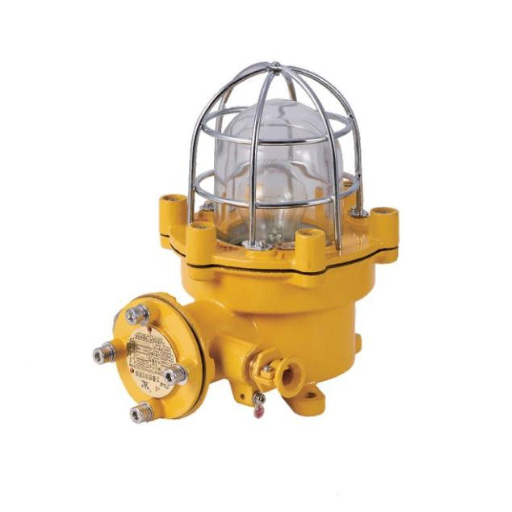
Hazard locations are primarily classified based on the presence of flammable materials such as gases, vapors, dust, and fibers, and the likelihood of an explosive atmosphere. Locations are further classified into divisions or zones according to factors relevant to the substance present, such as the type and concentration of the substance and how frequently it occurs. Knowledge of these classifications should allow one to select the proper type of equipment, such as explosion-proof lighting, which has been designed with safety standards and risk avoidance in mind for use in such environments.
What are the types of explosion-proof lighting?
Explosion-proof lighting is brought in to operate safely within hazardous environments by containing sparks or flames that might ignite flammable materials. Typical explosion-proof lighting includes:
LED Explosion-Proof Lights: LED lights represent the most extensive selection for explosion-proof lighting. Being so energy-efficient, very durable, and having such a long life, these LED lights hardly emit heat, reducing the risk of creating a hazard in flammable circumstances. Most modern LED explosion-proof lights are made from aluminum or stainless steel, allowing them to be corrosion-resistant even in unforgiving environments like chemical plants or offshore oil rigs. According to industry reports, LED explosion-proof lights have an average life span of 50,000 hours and consume 75% less energy than traditional lighting systems.
Fluorescent Explosion-Proof Lights: Fluorescent explosion-proof lights deliver reliable performance and are generally used in industrial manufacturing and storage facilities. These lights have a wide range of coverage and relatively uniform illumination, making them perfect for areas requiring wide-area lighting. Even though these are less energy-efficient than LEDs, however, fluorescent can still be a good solution for hazardous locations, especially for temporary or fixed installations.
HID (High-Intensity Discharge) Explosion-Proof Lights: HID explosion-proof lights, including metal halide and high-pressure sodium types, have high light intensity and are suitable for wide areas, such as mining or construction works in hazardous zones. These types, however, tend to emit high heat and have a shorter life span than an LED system. Due to their few limitations, they are still worthy in some applications where their bright light can shine across a hazardous zone.
Portable Explosion-Proof Lights: Portable lighting is needed for any work in hazardous zones, hence the presence of explosion-proof flashlights and work lights. Powered by abrasive light sources such as LEDs, these lights are otherwise lightweight. Their use offers the flexibility and mobility that inspections and maintenance require.
Emergency Explosion-Proof Lights: Emergency lights provide backup lighting, thus ensuring maximum safety for a hazardous environment during a power outage. Most of these models come integrated with a battery-powered system that kicks off automatically whenever unsafe conditions are detected. In a disaster scenario, this ensures lighting availability in emergency evacuation or equipment failure.
In picking an explosion-proof lighting solution, one must consider the different classifications of the hazardous locations (Class I, II, III), operating temperature range, and energy efficiency. Constant development of materials and technology has made these critical lighting systems more reliable and efficient, thus addressing an ever-increasing demand for safe and sustainable solutions.
How is the classification system structured?
The classification is designed to specify the types of hazardous realms in which explosion-proof lighting can be applied safely. Some key elements are Class, Division/Zone, and Group:
Class: Refers to the type of hazardous material present;
Class I: Places with flammable gases or vapors,
Class II: Places with combustible dust,
Class III: Places with ignitable fibers or flying.
Division or Zone: Defines the likelihood of the hazardous material being present;
Division 1 or Zone 0/1: Is a location where the dangerous condition is anticipated under normal circumstances;
Division 2 or Zone 2: Is an area where the hazardous material is present only under abnormal conditions.
Divides the type of substance contained in each Class:
Group designations, such as A to G, group specific materials, such as acetylene, hydrogen, and grain dust, based upon their ignition properties.
Upon such a basis, the system helps define working procedures, assess risk and minimize hazards in hazardous locations, and select the necessary lighting to satisfy stringent requirements.
What are Class II and Class III locations?
Class II and Class III locations are hazards defined according to any combustibles that pose a danger under specific circumstances. Industries that have such materials must observe strict safety measures.
Class II Locations are those areas in which combustible dusts are present. The dusts can ignite when dispersed into the atmosphere at critical concentrations and shall be set by ignition sources. The usual industries with Class II locations include grain handling, flour milling, and chemical processing plants. The combustible dust hazards are subgrouped into Groups E, F, and G according to the type of dust:
Group E—includes metallic dust of aluminum or magnesium that can conduct electricity and burn explosively.
Group F—These comprise carbonaceous dusts, such as coal dust and coke dust, which are conducive to ignition and abound in mining or coal power plants.
Group G— includes dusts from grain, flour, sugar, wood, and plastics, which are commonly encountered in the agricultural and food processing industries.
Class III Locations are those where combustible fibers or flyings are present but do not typically become suspended in the air in sufficient volumes to form an explosive mixture. These fibers or flyings accumulate near machinery or production areas and can ignite if exposed to sparks or excessive heat. Examples include textile mills, woodworking facilities, and places where large quantities of cotton, hemp, or flax are present.
Both Class II and III Locations need specially constructed electrical equipment to reduce the risk of fire or explosion. Such equipment must prevent the ignition of the surrounding hazardous materials and be approved to the highest safety standards. According to NFPA and other safety standards, continued inspections and maintenance are paramount to control hazards in such environments.
Types of Explosion-Proof Lights
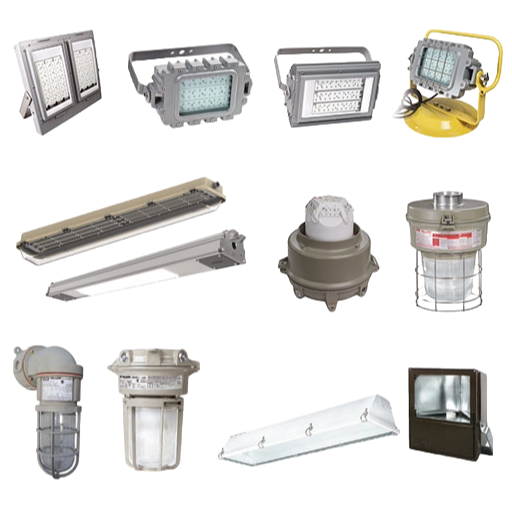
Explosion-proof lighting is made under hazardous conditions not to ignite flammable substances in explosion-prone areas. The main types are as follows:
LED Explosion-Proof Light: These lights are energy efficient and durable, generating little heat and having a long operational life, which makes them suitable for almost any location where hazardous conditions exist.
Fluorescent Explosion-Proof Lights: Usually installed in industrial environments, fluorescent explosion-proof lights offer attractive illumination and are often cheaper than other options.
HID Explosion-Proof Lighting: While radiating a lot of light, HID lighting finds applications in larger places or those that demand intense lighting.
Portable Explosion-Proof Lights: Designed for mobility, these are lightweight and easy to carry, and they are often used for temporary lighting requirements in hazardous areas.
Emergency Explosion-Proof Lighting: During emergencies, these lights maintain visibility during power outages in hazardous environments.
Hence, each type is developed meeting the requisite safety standards and customized for application in hazardous environments to ensure safe operations.
What are the different types of explosion-proof lighting fixtures?
Explosion-proof lighting fixtures are of different types, each engineered for the safety considerations of various industries and ensuring safety in hazardous areas. Here are the major types and their detailed features:
Explosion-Proof LED lights: The explosion-proof LED lights are highly energy-efficient, long-lasting, with an average life of 50,000 hours. These lights apply to high-risk industries such as oil and gas, chemicals, and mining. The lights do not generate much heat, minimizing the chances of igniting flammable gases or dust. New developments have made the LEDs very bright and in different wattages, ranging from 15W to over 150W, depending on the application needs. Furthermore, LEDs cost 80 percent less to run than traditional light sources, thereby reducing maintenance charges.
Explosion-Proof Flashlight: Portable and battery-operated explosion-proof flashlights are helpful for workers requiring illumination in enclosed areas or remote hazardous places. The flashlights are usually fabricated using rugged, non-sparking materials that would otherwise unintentionally ignite an explosive atmosphere. They offer advanced features and designs, such as waterproofing, multiple light settings, and running up to 100 hours, depending on the battery used.
Explosion-Proof Floodlights: Explosion-proof floodlights light up vast areas, including rig sites, construction zones, and industrial facilities. They are manufactured to sustain harsh on-site conditions and supply a very high lumen output, well above 25,000 lumens, for optimum visibility. They are made from impact-resistant materials like heavy-duty aluminum and have tempered glass for added protection.
Emergency Explosion-Proof Lighting: Emergency lighting is always needed during power outages or evacuation scenarios. The lights are usually designed with a backup battery to illuminate for hours. These fixtures are typically placed in manufacturing plants, offshore platforms, and warehouses, and are subject to stringent safety regulations to ensure their reliable performance at a critical time.
Explosion-Proof High Bays: High Bay explosion-proof lights are intended for use in buildings with high ceilings, such as warehouses, factories, or aircraft hangars. These lights supply powerful illumination from 15 to 40 feet, with lumen outputs ranging from 10,000 to 40,000. The lights are designed to distribute illumination evenly across wide spaces that benefit from increased productivity and safety.
Explosion-Proof Exit Signs: These are crucial for emergency egress through hazardous locations, and explosion-proof exit signs guide personnel to safety during an emergency. These are heavy-duty signs with LEDs as a backlight for clear visibility and on backup batteries for operation in case of power failure.
At the very least, every explosion-proof lighting fixture can do a specific job that, in turn, helps provide additional safety and efficiency in demanding environments. With every technological advancement, they continue to evolve and offer greater solutions to industrial needs.
How do LED explosion-proof lights compare?
Aside from other options, LED explosion-proof lighting is in a class of its own and is considered the best solution for hazardous environments. Energy efficiency is one of their significant advantages: LEDs consume far less power, generally by as much as 50-80% compared to incandescent or fluorescent lamps. This means cheaper operational costs, so the industries will find the LEDs quite economical.
Another vital issue pertains to their life span. The upper spectrum of a high-quality LED explosion-proof lighting fixture’s life may last between 50,000 and 100,000 hours, much longer than conventional lighting. Thus, maintenance and replacement costs are minimized. Also, LEDs emit little heat during operation, reducing the risk of heat incidents in potentially flammable and explosive environments.
The Sunday LED explosion-proof lighting is better with respect to light intensity and illumination. The brightness improvement and better directionality of light enhance visibility, which is critical for productivity and safety in hazardous areas. These lights will continue to deliver light output in extreme temperatures, vibration, and other mechanical stresses.
Technology innovations have made a big leap, and now many LED explosion-proof lights come with innovative features like dimming, motion sensors, and remote control. These features also allow for more customization and operational efficiency, justifying their position as the best industrial lighting choice.
What are explosion-proof exit signs?
An explosion-proof exit sign is a safety device meant to light the exit path within hazardous environments that may pose a threat of fire or explosion. Some common construction materials for these signs include reinforced aluminum and stainless steel, whereby each exit sign must be carefully sealed so as not to be an ignition source for flammable gases, vapors, or dust. These signs are used in industries such as oil and gas, chemical plants, and manufacturing facilities. They adhere to stringent safety standards, such as UL, ATEX, or IECEx certifications.
These exit signs use the LED light source for maximum durability and energy efficiency and are usually rated for over 50,000 hours of operation. Many models also provide an emergency battery backup, which will remain illuminated during power failures. Some explosion-proof exit signs with IP66-rated enclosures grant protection against water and dust ingress, which is helpful for outdoor or heavy industrial work. With their rugged construction, explosion-proof exit signs help ensure occupant safety and regulatory compliance in high-risk areas.
Applications of Explosion-Proof Lighting

Here is some information about lighting classified as explosion-proof. It applies where flammable gases, vapors, or combustible dust might be present. Such locations include oil and gas installations, chemical plants, mining areas, and processing industries. Further, such lighting may be required in warehouses, grain storage, and wastewater treatment factories, wherever hazardous conditions occur. These lighting systems are critical to safety as they prevent ignition and thus offer reliable lighting for high-risk areas.
Where are explosion-proof lights commonly used?
Explosion-proof luminaires are always needed in industries and environments where flammable materials or dangerous constituents are handled. For example, explosion-proof lights find huge applications in the oil and gas industries on offshore rigs, refineries, and storage facilities to prevent the ignition of volatile substances. These lights provide steady and safe illumination in areas where harmful vapors or reactive substances exist in a chemical manufacturing plant.
Mining is another industry that uses explosion-proof lighting to keep workers safe in underground tunnels where the accumulation of combustible dust and gases can pose a significant risk to lives. Reports from recent years show a 30% increase in demand for explosion-proof lighting in the mining sector due to new safety compliance. Warehouses, especially those that bio-process or store flammable materials, often install explosion-proof lights to reduce risks from explosive dust particles.
Meanwhile, another critical occurrence of explosion-proof lighting is in wastewater plants, mainly in areas where methane gas or other flammable chemicals could be released during processing. A strong focus on these safe lighting systems comes from the international safety and environmental norms. Modern explosion-proof lighting housed with LED technology thus brings forward higher energy efficiencies, excellent durability, and a longer lifespan, which are significant contributors to the new generation of high-risk environments.
How do they benefit processing plants and refineries?
Explosion-proof lighting enhances safety, operational efficiency, and environmental sustainability in processing plants and refineries. Offered as such, relatively advanced illumination solutions bear down on ignition risks under hazardous environments of flammable gases or vapors, thus averting disastrous accidents. Industry statistics state that an explosion-proof LED-lit facility may obtain energy consumption reductions of as much as 75%, depending on the conditions; in this process, operational costs become exceedingly diminished. They are long-lived, typically requiring more than 50,000 operating hours, hence becoming less demanding as far as maintenance is concerned, which interrupts operations—a great inconvenience to such facilities, which run around the clock.
The sturdiness and reliability of these lights allow them to resist being affected by extreme temperatures, vibrations, and corrosive chemicals typically found in industrial settings. This type of lighting remains a protective construction by international safety standards (ATEX, IECEx, UL) and meets all regulatory requirements for refineries and processing plants. In conjunction with enhanced lighting accuracy, this also allows workers to perform more effectively and safely under contaminated conditions. Explosion-proof lighting can help provide a long-term conversion regarding safety and adherence to high-risk industrial environments, operational improvements, and cost-effectiveness.
What are the considerations for lighting in hazardous areas?
When it comes to lighting, the various parameters influencing decisions must be taken into account to guarantee safety, efficacy, and compliance with regulations. First and foremost, the classification of the hazardous area is important. Zones 0, 1, or 2 and Divisions 1 or 2 are given as a kind of identification depending on the presence and frequency of explosive atmospheres. Explosion-proof lighting is specified according to these zones to avoid ignition within a potentially flammable environment.
Another criterion is the hazardous substance present, i.e., gas, vapor, or dust. For instance, if the lighting is meant for an area with explosive gases, it might require different materials and sealing considerations than those for dust-laden atmospheres. Temperature ratings of T1 to T6 also come into play and would determine the highest surface temperature allowable for a light fixture so that it may not ignite the flammable atmosphere.
Durability and materials are other considerations. Explosion-proof lighting must be constructed with rugged materials such as aluminum for the body and toughened or tempered glass for the lens to resist impacts and vibrations and endure harsh environmental conditions. It must also have proper ingress protection (IP) ratings, typically above IP65, to resist penetration by dust and water.
Energy efficiency and life are also factors, as lighting in a hazardous location is usually on continuously. LEDs are preferred simply because of their energy savings and their ability to last longer with less maintenance than conventional lighting. Studies have proven that LED lighting can save up to 70% in power costs over a period, as it provides consistent illumination.
Compliance with global standards and certifications, such as ATEX, IECEx, and UL, comes next to ensure the safety of workers and buildings. Lighting options meeting these standards can help reduce liability concerns and ensure compliance with legal and industrial regulations.
By managing these parameters, industries can maintain safety while optimizing their operations in hazardous areas with minimal environmental impact and reasonable expenditure.
Choosing the Right Explosion-Proof Lighting Solution
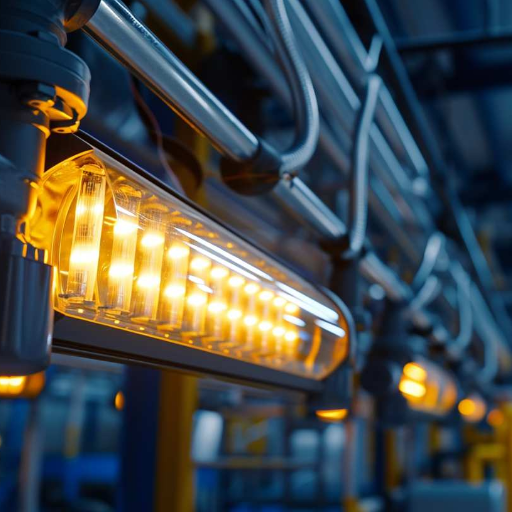
The key considerations when selecting the proper explosion-proof lighting include:
Hazard Classification—If the emission source is not specified in the spirit of the exploded view, allow a positive hazardous classification to be established, such as Zone 0, Zone 1, or Zone 2, so that suitable lighting can be applied to the environment.
Certifications and Standards—Ensure compliance with ATEX standards or other relevant certifications and standards such as IECEx or UL.
Durability and Material—Choose from robust compounds resistant to corrosion and can withstand a harsh environment, including extreme temperature, chemical application, and mechanical impacts.
Energy Efficiency—Select LED lighting that is cost-efficient in maintenance due to its long life and energy-saving features.
Installation and Maintenance—Your choice should be easy to install and maintain, reducing downtime and ensuring consistent equipment performance.
Addressing these aspects whenever possible guarantees that an explosion-proof lighting solution is safe, efficient, and appropriate for your industrial environment’s particular needs.
What factors determine adequate lighting?
A couple of factors would tell whether lighting is adequate in an industrial environment. For me, it always begins with the specific tasks or activities carried out in an area and the amount of light required for safety or performing those activities. I further consider the layout and space configuration, because providing an even distribution of light without dark spots is very important. In addition, factors such as energy saving, durability, and safety standards come to mind as I think of things that need prioritizing to ensure the lighting fulfills its functional duties and regulatory requirements.
How to ensure energy-efficient lighting?
Energy-efficient lighting solutions integrate new technology with best practices and maintenance activities that reduce energy consumption but provide lighting at the highest level of quality. Some critical steps are:
Upgrade to LED Lighting: Since LEDs are way more efficient than incandescent or fluorescent tubes, LEDs typically consume 75% less electric power than incandescent lights and last almost 25 times longer. Theoretically, replacing old lighting fixtures with LED fixtures will reduce any company’s energy consumption and maintenance costs.
Intelligent Lighting Control Systems: Advanced systems that include motion sensors, automatic dimming, or daylight harvesting features enable a dynamic level of lighting control based on usage patterns. Such systems can save lighting energy by 35 to 40 percent in commercial and office buildings.
Divide Lighting Zoning: Lighting control can be divided into zones for each specific use area; this allows lighting only where and when it is required. Lighting zoning is vital in larger buildings or facilities such as warehouses.
Leverage Natural Lighting: Harnessing daylight with proper window positioning, skylights, and light shelves diminishes demand on artificial lighting during the day. Empirical studies show that natural lighting can contribute to 20% energy savings in lighting and augments employee productivity and satisfaction.
Routine Maintenance: Dirty or unfit fixtures and worn-out components impair lighting efficiency. Routine cleaning and repairs keep the lighting systems at their best, thus reducing wastage.
Advanced Controls: Advanced works include timers and programmable schedules so that ON/OFF cycles fit well with the use pattern. For office buildings, for example, lights could be programmed to remain off after working hours, leading to significant energy savings.
Educate and Train Stakeholders: It’s essential to educate all stakeholders, including employees, about energy conservation practices, such as turning off the lights when not in use. Changes in behavior combined with technology strategies will generate more savings.
These methods can enable businesses and households to attain significant energy savings, lower costs, and ensure environmental sustainability, following global energy-saving standards.
What is the importance of reliable and safe lighting?
Production lighting: For various important reasons, including safety, productivity, health, and energy conservation, providing reliable and safe lighting is critical. Safe working and living conditions are supposed to be enhanced with lighting. For example, it is considered that properly lighting an area may reduce 60% of workplace accidents occurring in an industrial or manufacturing area, as it involves activities based on high precision and focus.
A further consideration of how lighting plays into productivity and wellbeing is that proper lighting in a working environment may increase people’s task performance by about 8%, as well as their moods and concentration levels. On the other hand, inappropriate lighting may cause eyestrain, headaches, and fatigue, affecting one’s health and capabilities.
Another energy efficiency consideration is that LED technology saves 75% of the energy compared to traditional lighting. LEDs also have a considerably longer life span, with an average of around 25,000 hours, providing economic and ecological benefits. Reliable lighting also helps emergency preparedness, ensuring uninterrupted operation during critical situations and showing its importance in various domains.
Reference Sources
1. Design of Temperature Test System for Explosion-Proof Lamps
2. Evaluation of Systems and Technologies of Underground Pipeline Gallery, Haikou
3. Explosion-Proof Equipment in Hazardous Areas
Frequently Asked Questions (FAQs)
Q: What is the primary function of explosion-proof lights?
A: Explosion-proof lights are designed to operate safely in hazardous environments where explosive gases, vapors, or dust may be present. They prevent any sparks or heat from the fixture from igniting the surrounding atmosphere.
Q: What are the different types of explosion-proof lighting?
A: The different types of explosion-proof lighting include explosion-proof LED lights, exit signs, hazardous location lighting, and explosion-proof lighting systems. Each type is designed to operate under specific conditions and requirements.
Q: How does the division system relate to explosion-proof lights?
A: The division system classifies hazardous environments based on the presence and concentration of explosive materials. It determines the appropriate lighting solution by categorizing areas into Division 1 or Division 2, which helps select the suitable type of explosion-proof lighting fixtures.
Q: Where are explosion-proof lights commonly used?
A: Explosion-proof lights are commonly used in environments such as oil refineries, paint spray booths, chemical plants, and other industrial settings where flammable gases or dust can cause explosions.
Q: What is an explosion-proof LED light?
A: An explosion-proof LED light refers to lighting fixtures that operate safely in explosive environments using LED technology. They are energy-efficient and provide robust illumination while minimizing the risk of igniting the surrounding atmosphere.
Q: What should be considered when selecting an appropriate lighting solution for hazardous locations?
A: When selecting an appropriate lighting solution for hazardous locations, consider factors such as the type of explosion-proof lighting required, the division classification, and the specific environment where the lights will be installed. A detailed guide to explosion-proof lighting can assist in making the right choice.
Q: What are explosion-proof exit signs?
A: Explosion-proof exit signs are designed to operate safely in hazardous environments and provide clear emergency guidance. They are crucial in ensuring safe evacuations without risking the ignition of explosive materials.
Q: Why is it important to use lighting fixtures designed to operate safely in hazardous locations?
A: Using lighting fixtures designed to operate safely in hazardous locations is vital to prevent accidental ignition of explosive gases, vapors, or dust. It ensures the safety of personnel and the integrity of the facility.
Q: Can you provide a guide to explosion-proof lighting solutions?
A: A guide to explosion-proof lighting solutions would include an overview of the types of explosion-proof lighting, the division system, appropriate lighting solutions for different environments, and the specific features of various lighting fixtures. This would help in selecting the correct lighting for specific hazardous locations.

